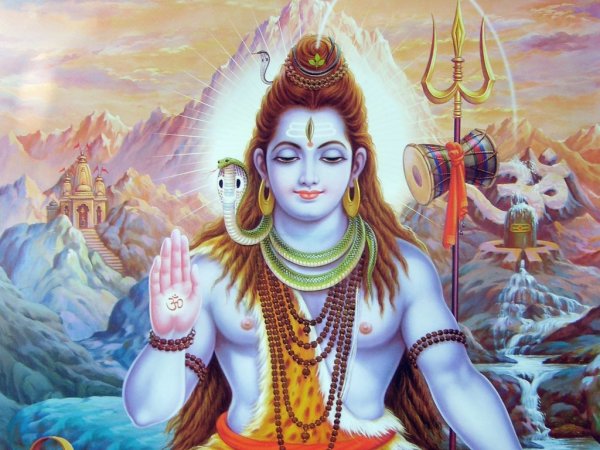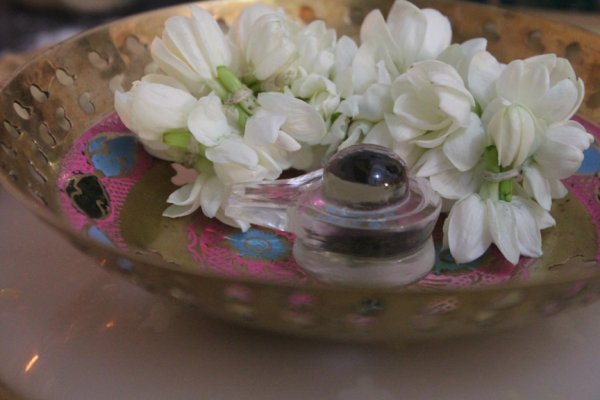Maha Shivaratri is an important Hindu festival which is celebrated throughout the world with grand valor. Shivaratri, night of Lord Shiva is celebrated on the 13th or the 14th night of the new moon during Krishna Paksha in the Hindu month of Phalgun and it usually falls in February – March.
Shivaratri has tremendous importance in Hinduism. Worshipping Lord Shiva on Shivaratri pleases lord the most. According to sacred scriptures, a devotee who worships Lord sincerely on this auspicious day is absolved of sins and attains Moksha. So, Hindu devotees all over the world celebrate it with utmost faith and galore.
Legends:
During Shivaratri, devotees stay awake all night chanting the name of Lord Shiva. There are a number of popular legends related to this custom. Though the reasons behind worship vary, the motive is one, to “make Lord Shiva happy”.
It is believed that on this day, Lord Shiva married Parvathi. Goddess Parvathi performed prayers on this auspicious day for well being of her husband. On this auspicious day, married women pray for the well being of their husband and children while unmarried women pray for an ideal partner. It is also believed that on this night, Lord Shiva performed the Tandav Nritya.
Another popular legend associated with Maha Shivaratri is that of the Samudra Manthan or churning of the ocean. This explains why people stay awake all the night on Shivaratri. When devtas and asuras joined hands for the mythical samudra manthan, a pot of poison came out of the ocean. It was powerful poison and on the request of the Gods, Lord Shiva drank the poison and held it in his throat. The potent poison changed the color of His neck. That’s why Lord Shiva is also called Neelakantha. As part of the therapy, Lord Shiva was advised to awaken during the night. In an effort to keep Him awake, the Gods performed dances and played music. Pleased with their devotion, Lord Shiva blessed them all. Thus, Shivaratri is celebrated as the day when Lord Shiva saved the universe.
Legend of Shivalinga is another popular fable associated with Shivaratri. According to the story, Brahma and Vishnu searched hard to discover the Aadi (beginning) and the Antha (end) of Lord Shiva. On this auspicious night, Lord Shiva manifested himself in the form of linga to reveal that there is no beginning or end to his being.
Legend of Ganga is another popular legend. As per this story, on this day, Holy River Ganga descended from the heavens to earth with full force and Lord Shiva held out his thick matted hair to the river Ganga and the meandering through Shiva’s lock softened Ganga’s journey to the earth.
Stories:
Many stories are associated with the Maha Shivaratri festival. The most famous story is of the hunter. A hunter unknowingly dropped bael leaves on Shivalinga and attained Moksha. While hunting in the forest, Suswara the hunter shot a deer but could not return home as night fell on the forest. O pass the night, he climbed a bael tree. He kept awake whole night because of hunger and thirst. He shed tears thinking about his wife and children who would starve without food. To divert his mind, he engaged himself in plucking bael leaves and dropping them.
This was happened on Shivaratri. There had been a Shiva Lignum under the tree and unknowingly, he worshipped Lord Shiva all the night. Moreover, he had fasted all day and night. Thus he received salvation. This fable was narrated by, Bhishma, discoursing on Dharma whilst resting on the bed of arrows while referring to the observance of Mahashivaratri by King Chitrabhanu. King Chitrabhanu of the Iksvaku dynasty was the hunter, Suswara, in his previous birth.
Shivaratri in India
Hindu devotees from across the country celebrated Maha Shivaratri with ritual bathing and prayers. Many devotees observe a strict fast on this day. Night long Shivarathri vigil is celebrated by singing hymns and songs on lord Shiva and devotees break fast only in the following morning by consuming Prasad offered to the lord.
On this auspicious day, devotees throng Shiva temples. In the north, devotees can perform the Shivalinga Pooja. First they circumambulate the Shivalinga, three or seven times, and then pour water over it. Some also pour milk. Sounds of bells and shouts of ‘Shankarji ki Jai’ or (Hail Shiva) reverberate in the temple premises.
Some of the famous Lord Shiva temples in India include Kashi Vishwanath Temple in Uttar Pradesh, Kedarnath Temple in Uttarakhand, Amarnath Temple in Jammu and Kashmir, Somnath Temple in Gujarat, Lingaraj Temple in Bhubaneshwar Orissa, Murudeshwar Temple in Karnataka, Srikalahasti Temple and Srisailam Temple in Andhra Pradesh and Ramanathaswamy Temple in Rameswaram.
In temples, throughout the night, Shivalinga is worshipped and every three hours, shivalingam is given a special abhisheka with milk, yogurt, honey, sandalwood paste and rose water. Chanting of “Om Namah Shivaya” accompany the Pooja. After ritual bath, Shivalinga is decorated with garlands especially with Bilwa leaves. Bael leaves are considered very sacred and it is said that Goddess Lakshmi resides in them.
Shiva Mahimna Stotra" of Pushpadanta or Ravana's "Shiva Tandava Stotra on various hymns in praise of Lord Shiva is sung with great devotion and fervor. It is believed that who utters the Panchakshara mantra during Shivarathri with full devotion is freed from all sins.
Shivaratri has tremendous importance in Hinduism. Worshipping Lord Shiva on Shivaratri pleases lord the most. According to sacred scriptures, a devotee who worships Lord sincerely on this auspicious day is absolved of sins and attains Moksha. So, Hindu devotees all over the world celebrate it with utmost faith and galore.
Legends:
During Shivaratri, devotees stay awake all night chanting the name of Lord Shiva. There are a number of popular legends related to this custom. Though the reasons behind worship vary, the motive is one, to “make Lord Shiva happy”.
It is believed that on this day, Lord Shiva married Parvathi. Goddess Parvathi performed prayers on this auspicious day for well being of her husband. On this auspicious day, married women pray for the well being of their husband and children while unmarried women pray for an ideal partner. It is also believed that on this night, Lord Shiva performed the Tandav Nritya.
Another popular legend associated with Maha Shivaratri is that of the Samudra Manthan or churning of the ocean. This explains why people stay awake all the night on Shivaratri. When devtas and asuras joined hands for the mythical samudra manthan, a pot of poison came out of the ocean. It was powerful poison and on the request of the Gods, Lord Shiva drank the poison and held it in his throat. The potent poison changed the color of His neck. That’s why Lord Shiva is also called Neelakantha. As part of the therapy, Lord Shiva was advised to awaken during the night. In an effort to keep Him awake, the Gods performed dances and played music. Pleased with their devotion, Lord Shiva blessed them all. Thus, Shivaratri is celebrated as the day when Lord Shiva saved the universe.
Legend of Shivalinga is another popular fable associated with Shivaratri. According to the story, Brahma and Vishnu searched hard to discover the Aadi (beginning) and the Antha (end) of Lord Shiva. On this auspicious night, Lord Shiva manifested himself in the form of linga to reveal that there is no beginning or end to his being.
Legend of Ganga is another popular legend. As per this story, on this day, Holy River Ganga descended from the heavens to earth with full force and Lord Shiva held out his thick matted hair to the river Ganga and the meandering through Shiva’s lock softened Ganga’s journey to the earth.
Stories:
Many stories are associated with the Maha Shivaratri festival. The most famous story is of the hunter. A hunter unknowingly dropped bael leaves on Shivalinga and attained Moksha. While hunting in the forest, Suswara the hunter shot a deer but could not return home as night fell on the forest. O pass the night, he climbed a bael tree. He kept awake whole night because of hunger and thirst. He shed tears thinking about his wife and children who would starve without food. To divert his mind, he engaged himself in plucking bael leaves and dropping them.
This was happened on Shivaratri. There had been a Shiva Lignum under the tree and unknowingly, he worshipped Lord Shiva all the night. Moreover, he had fasted all day and night. Thus he received salvation. This fable was narrated by, Bhishma, discoursing on Dharma whilst resting on the bed of arrows while referring to the observance of Mahashivaratri by King Chitrabhanu. King Chitrabhanu of the Iksvaku dynasty was the hunter, Suswara, in his previous birth.
Shivaratri in India
Hindu devotees from across the country celebrated Maha Shivaratri with ritual bathing and prayers. Many devotees observe a strict fast on this day. Night long Shivarathri vigil is celebrated by singing hymns and songs on lord Shiva and devotees break fast only in the following morning by consuming Prasad offered to the lord.
On this auspicious day, devotees throng Shiva temples. In the north, devotees can perform the Shivalinga Pooja. First they circumambulate the Shivalinga, three or seven times, and then pour water over it. Some also pour milk. Sounds of bells and shouts of ‘Shankarji ki Jai’ or (Hail Shiva) reverberate in the temple premises.
Some of the famous Lord Shiva temples in India include Kashi Vishwanath Temple in Uttar Pradesh, Kedarnath Temple in Uttarakhand, Amarnath Temple in Jammu and Kashmir, Somnath Temple in Gujarat, Lingaraj Temple in Bhubaneshwar Orissa, Murudeshwar Temple in Karnataka, Srikalahasti Temple and Srisailam Temple in Andhra Pradesh and Ramanathaswamy Temple in Rameswaram.
In temples, throughout the night, Shivalinga is worshipped and every three hours, shivalingam is given a special abhisheka with milk, yogurt, honey, sandalwood paste and rose water. Chanting of “Om Namah Shivaya” accompany the Pooja. After ritual bath, Shivalinga is decorated with garlands especially with Bilwa leaves. Bael leaves are considered very sacred and it is said that Goddess Lakshmi resides in them.
Shiva Mahimna Stotra" of Pushpadanta or Ravana's "Shiva Tandava Stotra on various hymns in praise of Lord Shiva is sung with great devotion and fervor. It is believed that who utters the Panchakshara mantra during Shivarathri with full devotion is freed from all sins.
“Om Hara Hara Mahadevaa”





